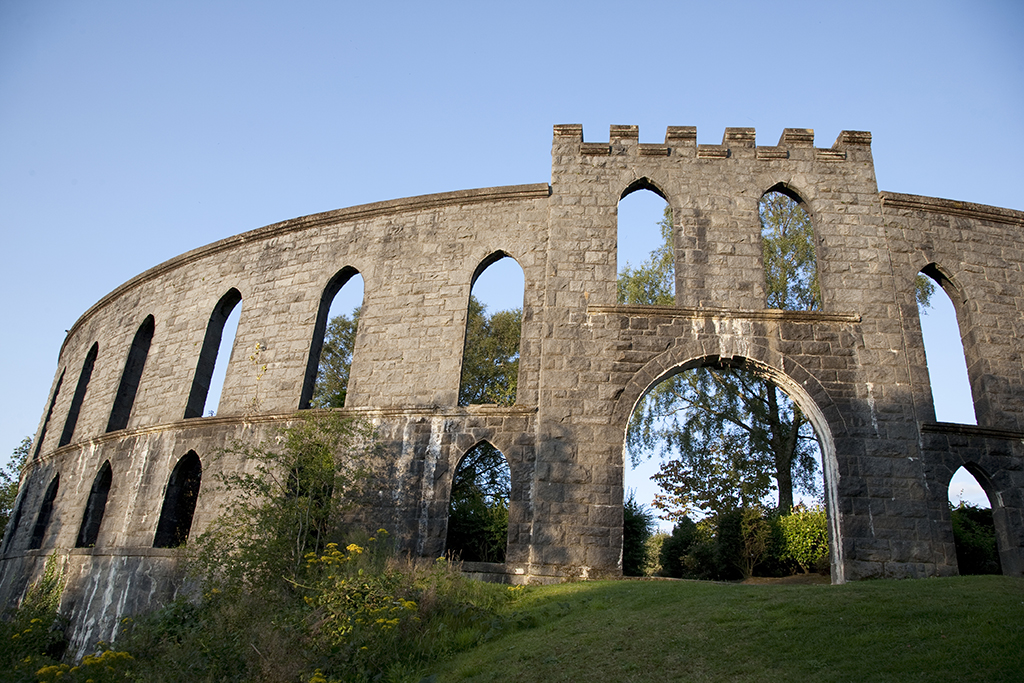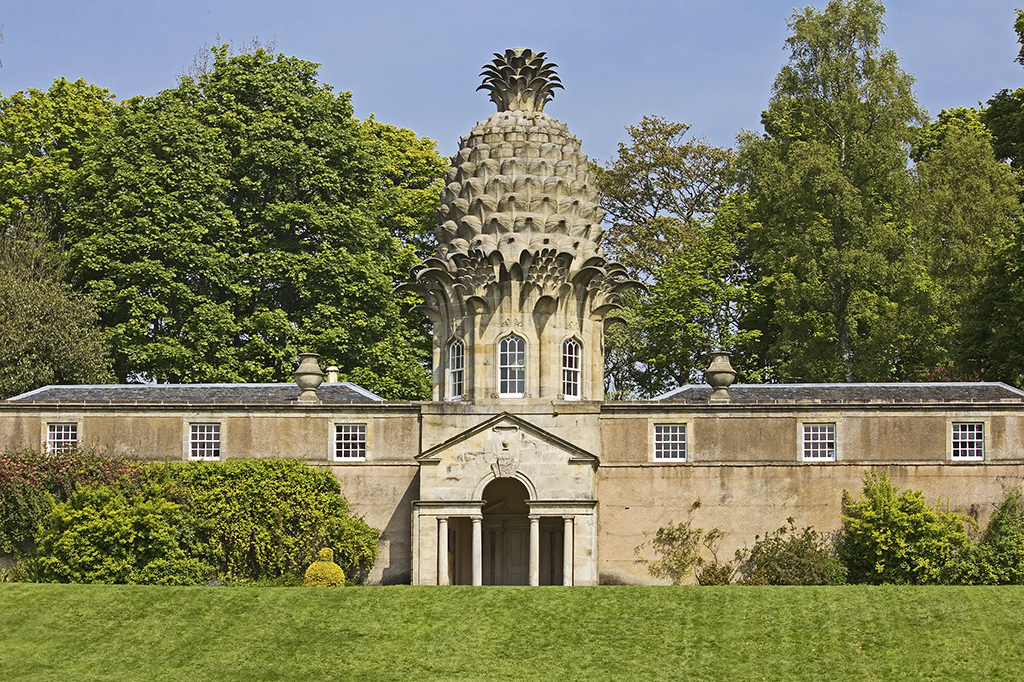Decadent indulgences by people with more money than sense, or touching attempts to leave a lasting legacy other than wealth?
Here we suggest 10 of Scotland’s finest follies.
1. Kinnoull Tower
Built in the 18th century by the 9th Earl of Kinnoull to resemble a castle on the Rhine in Germany, Kinnoull Tower is one of Perthshire’s most memorable landmarks. With its commanding position on a clifftop overlooking the Tay, it is a very popular spot for picnics.
2. Lord Gavin Hamilton’s temple
Gavin Hamilton, the 2nd Baron Hamilton of Dalzell, entered the House of Lords in 1900 and, from 1905-1911, was the Lord in Waiting, the Government whip. In 1912 he married Sybil Mary, the daughter of Lieutenant-General Frederick Marshall, and they enjoyed a very happy marriage until her untimely death in 1933. Devastated at losing the love of his life, Hamilton had the small ‘temple’ built in the woods overlooking her grave in the Dalzell Estate, North Lanarkshire, where he would spend his time sitting alone.
3. Hundy Mundy
This was the name given to the 18th century folly that stands at the end of Hundy Mundy Wood near Kelso in the Scottish Borders. It was commissioned by George Baillie of Jerviswood and designed by the famous Scottish architect, William Adam, who also designed Mellerstain House, which stands in direct line with the folly. The building is based on a tower that housed a Pictish princess and its name comes from Baillie’s children’s mispronunciation of her name – Hunimundias.
4. McCaig’s folly

This famous structure on a hillside overlooking Oban was commissioned by banker John Stuart McCaig in the 1890s at the cost, in today’s money, of over £500,000. The structure, which resembles the famous Colosseum in Rome, was intended to be a monument to his family and provide work for local stonemasons during the winter months. The design also included a museum, art gallery and central tower but McCaig’s death in 1902 put a permanent halt to proceedings.
5. Lewis War Memorial
In 1920 following the Great War, which claimed the lives of 1151 Lewismen, and the Iolaire disaster in 1919 when 205 passengers (175 from Lewis) drowned at the Beasts of Holm, an appeal was made by the Stornoway Gazette for public subscriptions to construct a fi tting memorial. A competition was held to fi nd a design for the memorial, and the 85-foot Scottish baronial-style tower was completed in 1924.
6. Fyrish Monument
This unusual structure was built in 1782 in Evanton, near Easter Ross, by the landowner Sir Hector Munro. It represents the Gate of Negapatam in Madras, which General Munro took for the British in 1781. Apparently Munro ordered its construction to help alleviate the problems of chronic unemployment after locals had refused charitable handouts. A local myth claims that after villagers had transported large boulders to the top of the hill, Munro rolled them down again so he could pay them twice for the job. There is a darkly ironic twist to this tale, however, since by clearing his land to make way for sheep farming, Munro had caused the unemployment in the first place.
7. Dunmore Pineapple

Described as ‘the most bizarre building in Scotland’, it was built in 1761 by John Murray, the 4th Earl of Dunmore, as a hothouse for growing – what else – pineapples. The 14-metre high, hand-carved pineapple may well have been designed by Sir William Chambers. Whilst common enough today, in the eighteenth and nineteenth centuries the pineapple was rare and exotic, a symbol of wealth and power.
8. Prop of Ythsie
This tower, resembling a giant chess piece on the Haddo Estate in Aberdeenshire, was constructed in memory of the local laird George Gordon, the 4th Earl of Aberdeen. The monument was paid for by voluntary subscription by the tenants in gratitude for the improvements to their quality of life made by their benevolent landlord. How grateful the tenants and how voluntary the subscriptions, however, is a matter for some conjecture.
9. Gartincaber Tower
Situated on a hill to the east of Doune, the tower was built in 1799 by William Murdoch of Gartincaber House and was intended to mark the very centre of Scotland, which is believed by many – most local to the area – to be there. The two-storey gothic-style octagonal structure was originally built as a doo’cote but has an iron spiral staircase and a fi replace on each floor. It was used as a lookout tower during the Second World War.
10. Harold’s Tower
The tower is built on the spot believed to be where local hero Harald Ungi (Young Harold), was killed by ruthless Orcadian Harald Maddadsson (Harold the Elder) during a vicious battle in 1196. Young Harold was buried near to where he died and locals, believing him to be a Saint, built a small chapel, which fell into disrepair. At some point between 1780 and 1790, on the advice of a local minister, Sir John Sinclair of Ulbster erected a tower in its place as the Sinclair family mausoleum.
TAGS

